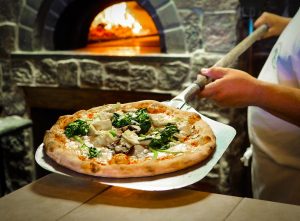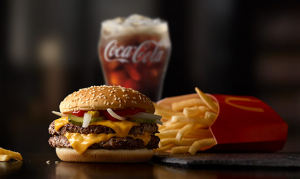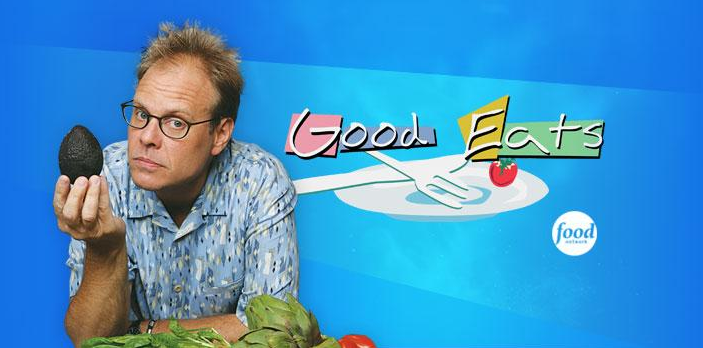https://drive.google.com/open?id=0BzIOw5XN2RJ8XzhYTHhXaDNLS1E
Annotated Bibliography
Chance’s Annotated Bibliography: TexMex
https://docs.google.com/presentation/d/1IpEJuLOTA8SD5l00h2j-Mb6CLE_Jo_phV1K7WrvUYhI/edit?usp=sharing
Gender in Cooking (Annotated Bibliography)
This is a link to my Annotated Bibliography, one that is focused on the gender bias behind cooking. I use articles, newspaper, personal statements, and cookbooks as my evidence for my research on this topic. This topic not only matters to me, but is important for society to see how we not only place people into these gendered space, we reproduce these ideas consistently to the point that when people contest them they have the potential to excluded from society. The cooking world is dominated by men and they have been using their power to oppress women through sexist ideas present in cookbooks (women always found in the kitchen), male based cookbooks are loaded with stereotypes, the majority of publishers today are men, and men are some of the sole authors of history. Cooking is something that should not be based gender, food is food and as long as its good nothing else should matter.
https://docs.google.com/presentation/d/1zszThX6rxkfL2rBbs-ll40B8oLPxBJe8EO1oqSL8uqs/edit?usp=sharing
Protected: The American Food Industry: The Evolution of Agriculture and Farming
Chinese Food
Ryan Newberg
RHE309K
Annotated Bibliography
This site really gave me a cool and different perspective than how most articles communicate to readers. I was able to be entertained and interested the whole time while reading this because it gave me fascinating information that really caught my attention. It states all the strange eating habits involving Chinese food along with entertaining stories to keep my attention. In this piece, it describes “Li Sanju claiming to have survived for two years eating nothing but leaves and grass.” This shows just how wild Chinese eaters can be. I appreciate this style of writing and I know many others do too because often times readers can easily be bored with pieces but this one really keeps your eyes open. I did some background research on the writer for this article and he seems to have a great amount of knowledge when it comes to this subject. He has passed away but his dearest friend has taken over his work and continues to make great articles.
http://www.asian-nation.org/asian-food.shtml
When wanting to learn the real facts about the history of Chinese food, I found the perfect article with this one. While reading this, I was able to get a clear understanding on the background of Chinese food and where it came from. The page provided subjects on the types of food, how it is made and the health information regarding it which I really appreciated. The site says that “many westerners are only now understanding the health benefits of many Asian foods” so it is a very good idea to share the health facts. The creator for the article is one who is well known and has been in the business for a long time.
http://www.asian-nation.org/asian-food.shtml
Since we live in America, I decided to focus on Americanized Chinese food. For the most part, Asian food is the same in America as it is in China. This piece shared with me an illustrated history of Chinese food that I was very interested in. While going in depth on the food, I also got to learn about the history of the famous dessert, the fortune cookie. It was very cool finally understanding where the cookie came from since I have it so often. The article even happened to mention my two favorite Asian food restaurants, Panda Express and PF Changs.
https://www.youtube.com/watch?v=Rk011so6MUc
This video was very enjoyable to watch for all members of an audience. All ages would enjoy watching because it was very clever and funny at the same time. It did not share the usual main Chinese dishes people think of, yet, it took us to a child’s view on Chinese snacks. It was a funny video that showed how American food and Asian food look similar but are different. I can totally relate to the video because I clearly remember being in 5th grade and doing the same thing by trying a Chinese snack and it was awful.
https://www.youtube.com/watch?v=8lK475dxZds
I decided to watch and write about this video because it shows how crazy some Chinese foods can be. In China, people eat almost everything and it is not thought of as abnormal or weird. In this video, Americans are trying these exotic Chinese dishes and it is enjoyable for everyone to watch because the reactions on these people are priceless. The purpose of this video is to show everyone how crazy Chinese food can be… Including LIVE Octopus and other absurd items.
https://www.youtube.com/watch?v=Fo59LlkTDe4
As many of my family and friends know, I love Panda Express and eat it multiple times a week. I found a great video of people from China trying American Panda Express. The video provides us with Chinese people eating Panda Express for the first time and their reactions are quite entertaining. The purpose of the video is to show China residents what American Chinese food tastes like and it turned out to be for our enjoyment.
http://www.chinahighlights.com/travelguide/article-china-drinks-you-will-love.htm
This whole project is focused on food… What goes down with your food?? A tasty and delicious drink! I decided to use this article to share some interesting Chinese drink options. Chinese restaurants are famous for their tea, fruity drinks, and their alcoholic beverages. The Mai Dong Sports Drink is their most common American bought drink and I can vouch for that as I have seen my brother order one every time we get Chinese food. Although his favorite part of the drink isn’t the taste, it is popping a ball that sits at the top.
http://www.chinahighlights.com/travelguide/article-chinese-desserts.htm
For my last piece, I decided to focus on a child’s favorite part of a meal and the finishing touch, the dessert. Chinese food has a wide variety of desserts whether it be common or very unusual. A fact I would like to share is that the names are outrageous. The article goes into depth about the top 10 Chinese desserts and they would seem interesting to many Americans but for me, as a picky eater, I’m going to have to hold off.
This topic is one I have always been interested in and I am very happy I was able to finally discover more information with. I seriously eat Asian food for more than half of my meals a week and I cannot say that I am disappointed in my actions. I enjoy every second I eat tasty Teriyaki Chicken and Mongolian Beef, and hot Wonton Soup. It was not easy deciding to do this topic as I was very conflicted between this, Chinese food and Teriyaki Chicken itself. I decided to go with Asian food so I can get a broad understanding of what I have been eating all of this time. When it came to selecting texts, I wanted to research things that people would not expect. I like to have my audience interested at all times so I enjoy having some sort of fun with my articles. I think videos get some peoples attention more than reading so I like to share pieces that way as well.
A Brief Glimpse into the Coffee Industry
America seems to run on coffee, but where does our coffee come from? What is the process and journey that coffee goes through before we consume it? Through this report I will answer those questions by guiding you through a glimpse into the coffee industry where you will be able to see some of the injustice taking place within the industry and ways that those injustices are being combated.
https://docs.google.com/document/d/1CzPVINKXLRhZ3NNfPtDnjWaayzJQ3IfC4bE4CARViZw/edit?usp=sharing
Matthew’s Annotated Bibliography
I decided to compile my annotated bibliography into a PDF, so as not to lose visual formatting in WordPress. A link to the PDF here: Annotated Digital Bibliography
The Evolution of Food Media
The Problem With Watching Too Many Cooking Shows
Ferdman makes a bold claim in his article by stating that, “As Americans cook less and less, they seem compelled to watch people cook more and more.” Ferdman creates a case around this claim, arguing through studies that the more one watches food television, the less healthy they eat. He also shows that people who watch food television and cook are even more prone to eating and cooking less healthy. Ferdman ends his article with a quote that sums up his rational towards the subject; “Restaurant quality meals really shouldn’t be eaten every day.”
Ferdman is taking a much more aggressive viewpoint on food television compared to other writers. From the beginning of his article, Ferdman takes a strong stance, not exactly against food television, but of the audience of food television. Ferdman is exposing what happens after the television is turned off, and studies show it isn’t exercise. Ferdman does seem to have a bias against unhealthy eating, calling out (ex) Food Network chef, Paula Deen for her insatiable use of butter in many of her dishes. This article tackles the eating or consuming category of food writing due to the texts hard stance against eating as if you were a Food Network chef. Ferdman demonizes the fatty, oversized food that has now become a popular staple of food television as it is normalizing this food; viewers are seeing these foods being eaten every day and in turn figure that they can eat like that every day as well. Ferdman emphasizes that if one wants to eat like a television chef, do it in moderation.
Ferdman, Roberto A. “The problem with watching too many cooking shows.” The Washington Post. WP Company, 18 Mar. 2015. Web. 2 Mar. 2017.
The Feeding Tube: How Food Television Changed The Way We Eat
Platt’s article discusses how food television has changed and how this change can be seen in American culture. “More people on average watch the Food Network than CNN, and when you throw in other hit food shows (No Reservations on the Travel Channel, Top Chef on Bravo, Kitchen Nightmares on the BBC and its American spinoff on Fox), you have an audience that dwarfs almost anything outside of ESPN.” With this quote in mind, one can begin to imagine the broad scope that food television now has in America. Adding to this line of thought, Platt introduces the idea that food television personalities are now not just “cooks” but have become food celebrities to the American people. Platt ends the article with a celebrative tone, telling his audience to just enjoy this “golden age of food television…because it is here to stay.”
Throughout this article, Platt’s mood seems to shift. While at the beginning he seems to be calling for reform of food television, the end has a drastically different tone in which he gives the impression that change is bound to happen in every industry and we just have to learn to go along with the change. This text mainly falls into the selling or marketing food writing category due to mainly discussing food television and its corresponding personalities, as they relate and influence the American home. Food television can now be found in almost every home, whether it is directly through the television or through items that were either created, shown, or endorsed by food celebrities. Food media is here to stay.
Platt, Adam. “The Feeding Tube: How Food Television Changed the Way We Eat.” Grub Street. N.p., 24 Oct. 2011. Web. 01 Mar. 2017.
We Spend More Time Watching Food On TV Than We Do Cooking It
Mills’ article gives an eye-opening view on food media and its relationship with actual cooking in the home. She begins her article stating a somewhat shocking fact, “The average adult spends more time watching, scrolling and reading about food on social media that they do cooking their daily meals.” She ends her article on a somber note, rehashing an interview with media psychologist, Emma Kenny. Kenny comments on the massive amounts of food media that is now available to the public, but despite this people are still not actually cooking in the home.
In Mills’ article, she gives a lot of good facts and information about how food media is all prevalent in many people’s lives, but she doesn’t add much commentary; rather she quotes others to get her point across: food media has changed from informational and informative, to more of a leisurely pastime, no longer used to help the at home cook.
Looking at her bias, she is not seemingly swaying to any argument at the beginning, moreover she is just trying to get to information out to her readers. Near the end of the article she does appear to have more of an opinion, as the use of the direct quotes seem to be talking for her. Her goal from this article is trying to get readers to become aware of how much food media is in our lives, and introduce the idea that cooking is not just for professionals and is not that expensive. Her overall stance seems to be advocating for a change in how the public uses food media. Mills seems to want to get back into informational food media rather than have it be the leisurely activity it has turned into.
Mills, Emma. “We spend more time watching food on TV than we do cooking it.” The Telegraph, Telegraph Media Group, 22 Sept. 2016, www.telegraph.co.uk/food-and-drink/news/we-spend-more-time-watching-food-on-tv-than-we-do-cooking-it/. Accessed 21 Feb. 2017.
Epic Rap Battles of History: Gordon Ramsay vs. Julia Child
This YouTube video, created by the user account “Epic Rap Battles of History”, pairs famed, hot-head chef Gordon Ramsay against the women who revolutionized TV cooking, Julia Child. They rap battle against each other, throwing lines with layers of multiple meanings at one another. The intended audience is a very vast group of people, as anyone who watches YouTube or is interested in food media may come across this; as of March 7, 2017, the original YouTube video has over 20.5 million views.
The creators of this “Epic Rap Battle” seem to be very fair and unbiased. Almost every word spoken has an under lying meaning, whether it is purely food based or more cut-throat and personal. Each character makes great points against the other and it is truly not just a one-sided battle. This document can fall into several food writing categories, but it most seems to follow the idea of celebrating or memorializing food media. This battle is pretty much pitting old versus new of food television, and has two of some of these most historic and branded chefs of the eras to demonstrate the drastic change that has occurred. This battle not only brings the history of food media to popular culture, but makes it fun to learn about through an underused medium.
“Gordon Ramsay vs Julia Child. Epic Rap Battles of History – Season 5.” YouTube, YouTube, 18 May 2016, www.youtube.com/watch?v=99-n42Xb6NQ. Accessed 28 Feb. 2017.
In this text, Dawn discusses the evolution of Food television. Dawn claims that while cooking shows evolve away from professional chefs showing the audience how to cook and more into reality television with do-it-yourself amateurs, the professionals are “evolving themselves out of a job.”
While not giving any defining opinion, Dawn seems to be judgmental towards the food television industry. The use of several quotes show his judgment and perhaps his longing for food television to return back to its roots: teaching the public rather than purely entertaining. In his longing, Dawn demonstrates features of the advocating for a change category. He leaves the reader with a sense of wariness towards having food television become just another reality television market.
Dawn, Randee. “TV’s Food Show Evolution.” Variety. N.p., 21 June 2013. Web. 27 Feb. 2017.
This article, with an anonymous author, gives an informational history of some of the most popular food radio shows of the 20th century. In looking at the evolution of food media, radio is important to examine because it is the real beginning of food media. While television has been a widespread medium, it wouldn’t be anything if radio hadn’t done it first. This article shows that, due to the time period, food radio was intended for women. Food radio was usually intertwined with other homemaker radio shows, such as “housekeeping tips, child-rearing, and even laundry tips.” As food radio began to progress as its own genre, many brands began to endorse shows such as PET Milk and The Mary Lee Taylor Program. Interestingly enough, a household name to this day, Betty Crocker, had a radio show and school all in one with the Betty Crocker Cooking School of the Air, eventually adapting the show to NBC in 1927.
While this article demonstrates traits of the memorialization category by reviewing the origins of food media, it also fits into the category of making. While this article doesn’t show a recipe, it does demonstrate how making food and widespread recipes became popularized and distributed in an era before television or the internet. This article shows that food media is, and will continue to be, a part of the American way of life, no matter the era.
“Cooking in Old Time Radio.” Cooking in Old Time Radio | Old Time Radio. N.p., n.d. Web. 23 Feb. 2017.
10 Years On: How Yelp Has Completely Changed the Restaurant Industry
Gardiner’s article claims that Yelp has given the public a forum to express their own critical voice, but questions whether that empowerment has gone too far. Gardiner seems to be writing towards the users of Yelp, with the biggest age bracket being 35-45 years old and people who earn more than $100k per year.
Gardiner’s opinion on food media, specifically the review site Yelp, is neither positive nor negative. He is able to show both sides of the argument, though he does give a disclaimer about the business’ ethics and potential consequences of having everyone be a critic, swaying him slightly towards the more conservative side of food media. This text falls into multiple food writing categories, but specifically encompassing marketing and advocating for a change due to the nature of Yelp and its powerful influence over the service industry. Gardiner seems to want the readers to be aware of the power that the consumer now holds, and not to be overly critical on seemingly petty things. Gardiner questions the practice of giving everyone a critical voice, and warns his readers to be wary as well; just because everyone is a critic, does not make them a good critic.
“No one cares if a particular McDonald’s gets a 2-star review. It’s McDonald’s. If the little mom-and-pop burger spot around the corner gets pelted with poor reviews on account of a lack of parking or that a well-done burger took “too long”, however, it could be put at risk. Call it an evolutionary phase of consumer capitalism, or the devolution of the “expert” opinion.”
Gardiner, Ross. “10 Years On: How Yelp Has Completely Transformed the Restaurant Industry.” Obsev, 23 June 2014, www.obsev.com/food/10-years-how-yelp-has-completely-transformed-restaurant-industry.html. Accessed 1 Mar. 2017.
The Yelp Factor: Are Consumer Reviews Good for Business?
Blanding’s article examines one of the biggest online review sites: Yelp; based upon research done by Michael Luca. The article has many similar opinions as Gardiner’s, but Blanding has a less cautious stance. While he does highlight some of the issues that Yelp and other review sites suffer from, he also proves the weight that online reviews carry. Using Luca’s research, Blanding shows that Yelp not only influences where people go, but what businesses survive.
Blanding keeps a very unbiased opinion in his article. He presents his and Luca’s information in a very open atmosphere, and allows for both positive and negative facts to be shared. He seems to be intending this article for Yelp users, as he wants to inform them of the full truth behind Yelp and its reviews. Due to the subject matter, this article is categorized into selling and marketing, as Yelp is one of the most popular ways to be able to advertise online. While reviews are still taken into deep consideration when purchasing anything, the importance of online reviews are growing every day.
Blanding, Michael. “The Yelp Factor: Are Consumer Reviews Good for Business?” HBS Working Knowledge. N.p., 24 Oct. 2011. Web. 1 Mar. 2017.
Annotated Bibliography
Immigration & United States Food Culture

Koger, Grove. “Foodways.” Immigration to the United States. N.p., 2015. Web. 27 Feb 2017. http://immigrationtounitedstates.org/504-foodways.html
In this text, Grove Koger introduces the idea that U.S. food culture has been affected by foodways. Foodways are foods preferred by immigrants, as well as the culture behind producing, cooking, or consuming them. Because of his status as an awarded librarian, Koger is able to incorporate information from a variety of different races and ethnic backgrounds. However, Koger seems to focus on European immigrants to America, most likely because he is of European descent himself. Through his article, he memorializes the foodways of many different immigrant groups to tie them to the common American today. This text serves as a basis to my topic, explaining the different food cultures of many popular immigrant groups of the United States. While other texts are more specific to a certain immigrant group, this text manages to be a broad overview of the entire topic, celebrating each individual culture as it is introduced and discussed.
Muturi, Jason. “8 Traditional Irish Dishes That Will Remind Every Irish American of Home.” Xpatnation. Jason Muturi, 17 Nov. 2015. Web. 27 Feb. 2017. < http://xpatnation.com/traditional-irish-dishes-that-will-remind-every-irish-american-of-home/>
 In his article, Jason Muturi shows several popular Irish dishes, discusses their origins, and gives general insight on how and when these dishes could be used. Since he is just a journalist of Irish descent, Muturi writes this article not for accuracy, but to celebrate the Irish food culture in America. Many of the dishes discuss popular American versions of the recipes, such as using beef to make an Irish stew instead of lamb. This text presents a great example of how generations in America can slightly change recipes to fit the needs of Americans over time, while still honoring the historic culture of the food.
In his article, Jason Muturi shows several popular Irish dishes, discusses their origins, and gives general insight on how and when these dishes could be used. Since he is just a journalist of Irish descent, Muturi writes this article not for accuracy, but to celebrate the Irish food culture in America. Many of the dishes discuss popular American versions of the recipes, such as using beef to make an Irish stew instead of lamb. This text presents a great example of how generations in America can slightly change recipes to fit the needs of Americans over time, while still honoring the historic culture of the food.
Nathan, Joan. “Food in the United States.” Jewish Women: A Comprehensive Historical Encyclopedia. 1 March 2009. Jewish Women’s Archive. (Viewed on February 27, 2017) <https://jwa.org/encyclopedia/article/food-in-united-states>.

In this article, Joan Nathan discusses the history of the American Jewish woman in terms of the kosher food industry. Being a Jewish woman herself, Nathan clearly caters to her own demographic, yet the tone of this piece is very professional and historical. She discusses not only the immigrant woman who started the industry, but also what the selling and marketing of kosher foods has become, even stating how it has spread beyond just Jewish people. This article goes very in depth into the history and culture of these Jewish women, and although it is one of the more biased sources pesented, it is also one of the most in depth. Nathan not only discusses the culture of the food, but also the extended effects across the United States and the global industry for kosher foods.
Shanker, Deena. “25 Classic Jewish Foods Everyone Should Learn To Cook.” BuzzFeed. BuzzFeed Inc, 26 Oct. 2014. Web. 27 Feb. 2017. < https://www.buzzfeed.com/deenashanker/make-bubbe-proud?utm_term=.vbLpKGXpX#.klYrvdnrn>

This text is a simple article for BuzzFeed, and does not contain much historical value. However, this is an excellent article to determine traditional Jewish foods and how to make them. Deena Shanker effectively links recipes for each of these 25 dishes, allowing the general audience to participate in cooking these foods. Shanker is a journalist for BuzzFeed and therefore only called upon personal experience to write this article; she does this in an attempt to be connected to a larger, less detail oriented audience. This text provides information for how to make these different, important, cultural foods as well as some light-hearted analysis of the dishes. BuzzFeed is a prominent source of entertainment for many Americans, and this article clearly depicts how immigrant foodways are directly making their way into overall American culture.
Perner, Lars. “Food Marketing, Consumption, and Manufacturing.” Thesis. University of Southern California, 2008. Food Marketing. Lars Perner, 2008. Web. 1 Mar. 2017. < http://www.consumerpsychologist.com/food_marketing.html>
Lars Perner is an assistant professor of clinical marketing at the Marshall School of Business at USC. In this extensive text, he discusses the theories behind food marketing across the globe. The purpose on this text is to explore insightful theories in terms of food marketing and consumptions to maximize manufacturing levels so that not only is there no shortage of popular foods, but also no surplus of unpopular foods. This thesis is highly technical and includes incredibly detailed analysis of this topic. The other texts take a much simpler approach, whereas in this text, Perner deeply analyzes the global trends that dictate the varying popularity of different foods from cultures all across the globe.
Mariani, John F. How Italian Food Conquered the World. New York: Palgrave Macmillan, 2012. Print

In his book, How Italian Food Conquered the World, John Mariani discusses the process of how pizza became immensely popular; specifically, how the marketing of pizza as a fast food led to a huge increase in demand for pizza in the United States. John Mariani is a decorated food author and journalist who has many books discussing Italian food, American food culture, and fast food. This shows directly how American’s commercialized an original Italian recipe. The text discusses the history of the first Italian pizzerias opening in New York City, and how from the small immigrant run places, it expanded into a huge world-wide business.
“Immigrants Eat American Junk Food to Fit In: Study.” U.S. News & World Report. U.S. News & World Report, 06 May 2011. Web. 27 Feb. 2017. < http://health.usnews.com/health-news/diet-fitness/articles/2011/05/06/immigrants-eat-american-junk-food-to-fit-in-study>

This article discusses how immigrants choose to eat fast food once coming to America simply to fit in. Although many immigrants choose to stay true to their culture, some choose to attempt to fit in with Americans by choosing fast food. This is a statement of how American food culture is perceived. Although this article does not have an explicitly named author, it focuses on the immigration of Asian-Americans over any other immigrant groups. This study illustrates how alienated our food culture still remains even to this day from the food cultures across the world. The author of this article was trying not only to discuss the poor consuming habits of Americans, but to show how easy it is to spread these negative habits to immigrants who are willing to change in order to be accepted.
Choi, Amy S. “What Americans Can Learn from Other Food Cultures.” Ideas.ted.com. TED Conferences, 03 Jan. 2016. Web. 27 Feb. 2017. < http://ideas.ted.com/what-americans-can-learn-from-other-food-cultures/>

Amy Choi expresses an interest in advocating for a more culturally diverse food culture in America. As a woman who is married to a man of mixed ethnic backgrounds that do not overlap with her own, she sees herself as a global citizen with deep knowledge of other cultures. She describes American food culture as very fast and efficient, while other cultures cherish and savor mealtime as an important ritual. She advocates for this shift to create a food culture in America that is celebrated for its quality and not just for its efficiency. This article is written to be read by the public of America in the hopes that they will begin to think differently about the food culture that they portray. Choi explains how American food culture has implored some changes based on immigrants, but has not taken certain key aspects. Although this article gives less specific facts, it gives many theories and ideas about food culture in America and across the world.
Perceived Authenticity: a look into the role of Mexican cuisine in the United States

Image Courtesy of BevCooks.com
Being from Texas, I’ve always been surrounded by Mexican food. Having family which hail from Harlingen, a small town in the Rio Grande Valley about 20 miles from the border to Mexico, I had the privilege of being exposed to good, authentic Mexican food at an early age. However, growing up in Dallas, I have also experienced many traditionally “inauthentic” Mexican dishes, mostly of the Tex Mex variety. Both varieties of “Mexican” food taste very good, but in our society, the “inauthentic” dishes are regarded as lesser. Thus, I’ve been researching how people perceive authenticity of Mexican cuisine in the United States, and have found an interesting trend. It appears that, in this context, people generally care more about whether the food is authentic than how the food tastes.
Read more here.







